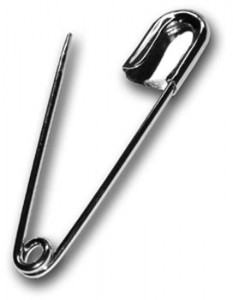Last week the Circle of Docs team received an email from ‘Dr. Sara’ who frantically wrote in to our staff, “Circle of Docs, can you please help me? I just started out in practice and I am having some major issues communicating what a subluxation is and its importance to my patients. When I was in school, it was so easy and seemed that every person I met in clinic already had a Chiropractic background.” Help!
To answer help Dr. Sara we contacted COD contributor and master of patient communications, William Esteb from Patient Media for an answer to this question.
Dear Dr. Sara,
Most patients have never heard of vertebral subluxations before visiting your practice. Communicating the significance of vertebral subluxation is a daunting task even if patients are interested.
They figure they just “have a bone out of place.” Maybe they do. But their problem is far more serious than that. And so is yours.
Because germs trump subluxations.
Before you whip out your anatomical models and your impassioned explanation of subluxation physiology, be aware that most patients have a far deeper concern.
“Is that clean headrest paper?”
Your subluxation explanations will fall on deaf ears if you ignore the mighty microbe. But for now, let’s leave confronting the Germ theory for another time.
Your Box of Chocolates
The best communicators use metaphors, similes, analogies, word pictures, stories, fables and parables in their explanations.
When Frank Sinatra crooned the Cole Porter lyrics, “I’ve got you under my skin. I’ve got you deep in the heart of me,” he wasn’t describing a subcutaneous object or a foreign object in his left ventricle! He was merely using a couple of metaphors to communicate an abstract comparison. Similar to a simile:
This is like that. As in, “Life is like a box of chocolates.”
Combine metaphorical language with the old adage that “a picture is worth a thousands words,” and you enhance your ability to communicate with patients.
Yet, most practices have only the most rudimentary wall graphics. Usually anatomical illustrations or monochromatic shadows of spinal bones. It stands in the way of connecting on a deeper, more significant level with today’s visually-oriented patient.
My Three Favorite Chiropractic Metaphors
I’ve collected metaphors for decades since being introduced to their power by Dr. Joseph Flesia. Here are my three favorites:
Dimmer Switch
 Install a dimmer switch in the room where you give your reports. (If you have fluorescent fixtures, consult an electrician for help wiring the ballasts for proper dimming.)
Install a dimmer switch in the room where you give your reports. (If you have fluorescent fixtures, consult an electrician for help wiring the ballasts for proper dimming.)
Before your report, dim the lights to half-intensity or so. Patients will quickly adapt to the lower light level, in the same way that his or her body was able to adapt to reduced nervous system function.
When it’s time to make your recommendations for care, explain your adjusting approach designed to reduce vertebral subluxation and go for the dimmer switch, restoring the lights to full intensity while observing, “…so our approach is to reduce nerve interference so your body can function at full power. Shall we get started?”
Rubber Band Tourniquet
“May I?” you ask, revealing a common rubber band and reaching for their index finger. After you wrap the rubber band around their index finger a couple of times, you’ll get the predictable inflammatory response. Your response should state, “This is a lot like what happens when spinal nerves are choked by misaligned spinal bones. We call this vertebral subluxation.”
See how it’s all red and inflamed? Some might recommend a simple massage. (Use your index finger to rub their fingertip with deliberate one-way strokes.) That doesn’t seem to do much.
 Perhaps we should try some physical therapy. Give that finger some exercise!” (Demonstrate with your own index finger as if you were performing calisthenics with your index finger.)
Perhaps we should try some physical therapy. Give that finger some exercise!” (Demonstrate with your own index finger as if you were performing calisthenics with your index finger.)
“Hmm. That doesn’t seem to be doing much either. What else can we try? I know, how about some type of electrical therapy?”
(Create a buzzing sound as you move your own finger in small circles on theirs.)
“How’s that helping?”
“I suggest that we remove the nerve pressure,” you suggest as you undo the tourniquet. That’s what chiropractic adjustments do to reduce vertebral subluxation. Shall we get started?”
Safety Pin Cycle (Patient Media offers a 5” safety pin that makes this metaphor come to life.)
 With the pin clasped together, hold it with the spring at the top. “Up here is your brain, which generates nerve impulses that control and regulate your entire body, from your nose to your toes.”
With the pin clasped together, hold it with the spring at the top. “Up here is your brain, which generates nerve impulses that control and regulate your entire body, from your nose to your toes.”
As you trace your finger down one side of the pin, “Nerve impulses are sent down the spinal cord and out to every organ and tissue of your body.”
Trace your finger up the opposite side saying, “So that your brain knows everything is working as designed, impulses are sent from your body back up to the brain.”
Unclasp the pin.
“Many things can disrupt nerve impulses either to or from your brain. The most common are the moving bones of the spine. We call that vertebral subluxation. When this happens, affected organs and tissues don’t work right and ill health can result.”
Reclasp the pin. “I locate and reduce vertebral subluxations with safe and natural chiropractic adjustments. With restored nervous system integrity, health can return. Simple as that.”
Dr. Sara, I hope these examples can help you in your practice. To get 50 more examples and metaphors that can help you communicate aspects of chiropractic, please download my free eBook, 50 Ways to Explain Chiropractic So People Get It. You can get it here: www.patientmedia.com/50ways
 Mr. William Esteb is the creative director for Patient Media, Inc., a patient education resource company for chiropractors. Subscribe to his weekly email, Monday Morning Motivation, read his blog and add his disruptive patient education tools to your practice procedures at www.patientmedia.com.
Mr. William Esteb is the creative director for Patient Media, Inc., a patient education resource company for chiropractors. Subscribe to his weekly email, Monday Morning Motivation, read his blog and add his disruptive patient education tools to your practice procedures at www.patientmedia.com.










